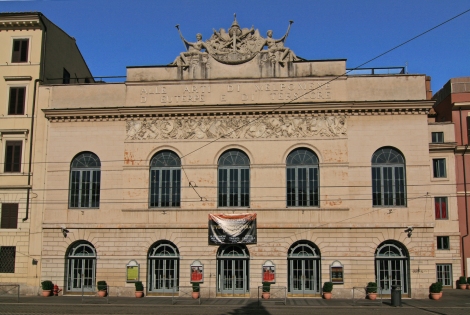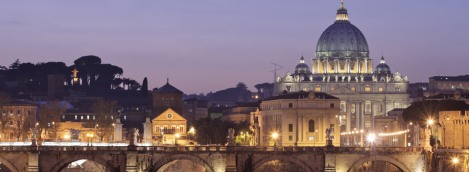Gian Lorenzo Bernini was born in Naples 413 years ago, on 7 December 1598.

He was the leading sculptor of his age, also a great figure in the emergence of Roman Baroque architecture and a wonderful painter. He approached Michelangelo in his omnicompetence: Bernini sculpted, worked as an architect, painted, wrote plays and staged spectacles.


At an early age Bernini came to the attention of the papal nephew, Cardinal Scipione Borghese, and in 1621, at the age of only twenty three, he was knighted by Pope Gregory XV. Following his accession to the papacy, Urban VIII is reported to have said, “Your luck is great to see Cardinal Maffeo Barberini Pope, Cavaliere; but ours is much greater to have Cavalier Bernini alive in our pontificate”.

It was on Cardinal Borghese’s request that Bernini sculpted the Greek Hermaphroditus, in 1619. The statue was inspired by a Roman copy of the 2nd century after a Hellenistic original of the 2nd century BC, and can be admired today in the Louvre.



Bernini worked mainly in Rome, but his masterpieces can be admired now all over the world. His sculptural output was immense and varied.
“Apollo and Daphne” (1622–25) has been widely admired since Bernini’s time; along with the subsequent sculpture of David it represents the introduction of a new sculptural aesthetic. It depicts the most dramatic and dynamic moment in one of Ovid’s stories in his Metamorphoses.

David (1623–24), like the “Apollo and Daphne”, was a revolutionary sculpture for its time. Both depict movement in a way not previously attempted in stone. The twisted torso, furrowed forehead, and granite grimace of Bernini’s “David” epitomize Baroque fixation with dynamic movement and emotion over High Renaissance stasis and classical severity.


The Rape of Proserpina is a large Baroque marble sculptural group executed between 1621 and 1622. Bernini was only 23 years old at its completion. It depicts Proserpina being seized and taken to the underworld by Pluto, depicting “rape” in its archaic definition of “kidnapping.” Bernini’s principal patron Scipione Borghese funded it, but then gave it to Cardinal Ludovisi in 1622, who took it to his villa. It remained there until 1908, when the Italian state purchased it and returned it to the Galleria Borghese.







The Ecstasy of Saint Teresa (alternatively Saint Teresa in Ecstasy or Transverberation of Saint Teresa; in Italian L’Estasi di Santa Teresa or Santa Teresa in estasi) is the central sculptural group in white marble set in an elevated aedicule in the Cornaro Chapel, Santa Maria della Vittoria, Rome. It was designed and completed by Gian Lorenzo Bernini, the leading sculptor of his day, who also designed the setting of the Chapel in marble, stucco and paint. It is generally considered to be one of the sculptural masterpieces of the High Roman Baroque. It pictures Teresa of Avila.
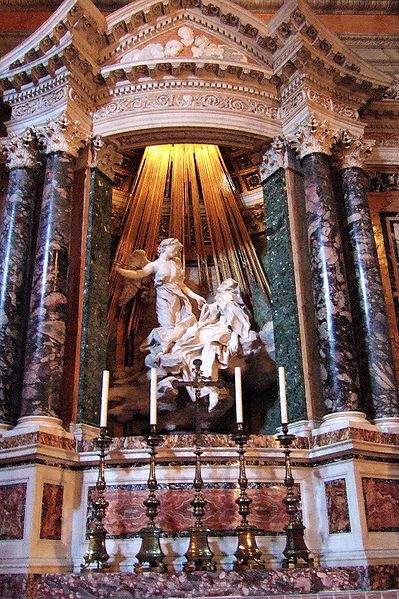

The “Beata (or Blessed) Ludovica Albertoni” (completed 1674) is a funerary monument in the specially designed Altieri Chapel in the church of San Francesco a Ripa in Trastevere, Rome, Italy. The sculpture and its setting in the Chapel were designed by Gian Lorenzo Bernini. He was seventy one years old when he began the work, and it was one of his last sculptures. The white marble figure represents the nun Ludovica Albertoni, a distant relative of the Cardinal, on her deathbed (she died in 1533). She is portrayed as experiencing both mortal suffering and religious ecstasy, surrounded by putti, and waiting to rise to the Holy Spirit. A recessed side window to the left helps to illuminate the sculptural subject. The altarpiece behind the sculpture is by Baciccio (Giovanni Battista Gaulli).
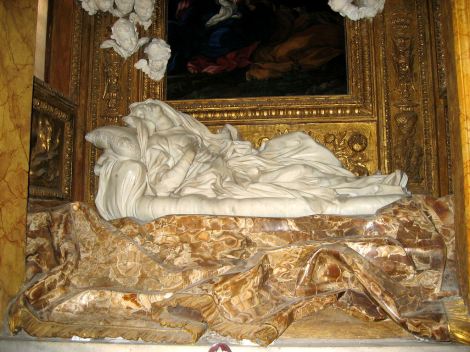

His architectural works include sacred and secular buildings and sometimes their urban settings and interiors.



True to the decorative dynamism of Baroque, among Bernini’s most gifted creations were his Roman fountains that were both public works and papal monuments.


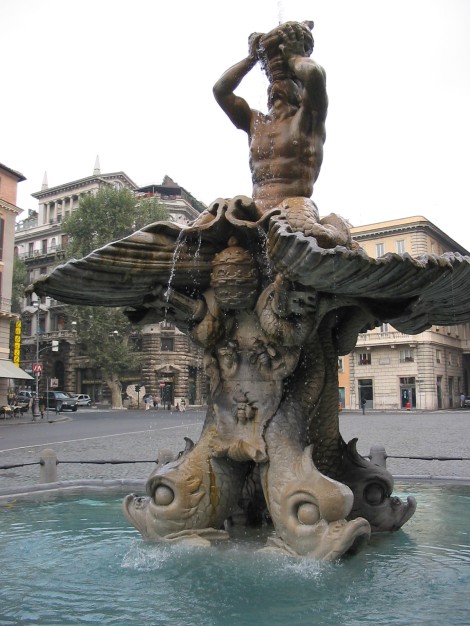

Amongst Bernini’s most well known works are the Piazza San Pietro, the piazza and colonades in front of St Peter’s and the interior decoration of the Basilica.

A student of Classical sculpture, Bernini possessed the unique ability to capture, in marble, the essence of a narrative moment with a dramatic naturalistic realism which was almost shocking. This ensured that he effectively became the successor of Michelangelo, far outshining other sculptors of his generation, including his rival, Alessandro Algardi.

His talent extended beyond the confines of his sculpture to consideration of the setting in which it would be situated; his ability to synthesise sculpture, painting and architecture into a coherent conceptual and visual whole has been termed by the art historian, Irving Lavin, the ‘unity of the visual arts’. A deeply religious man, working in Counter Reformation Rome, Bernini used light as an important metaphorical device in the perception of his religious settings; often it was hidden light sources that could intensify the focus of religious worship, or enhance the dramatic moment of a sculptural narrative.
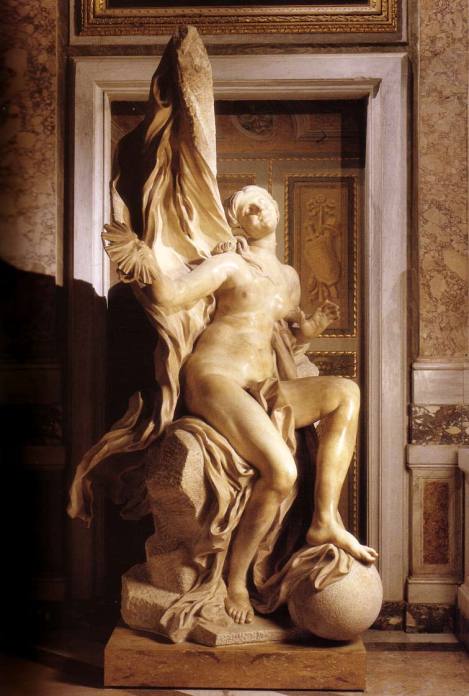

Gian Lorenzo Bernini died in Rome, on 28 November 1680. In the late 1670 Domenico, Bernini’s younger son, wrote his father’s biography, while Bernini was alive. Two years after his death, Filippo Baldinucci published Bernini’s biography in Florence, a narrative deriving with a very great extent from Domenico Bernini’s work.

Bernini: Self-portrait, 1623.

Bernini painted by Baciccio in 1665.



